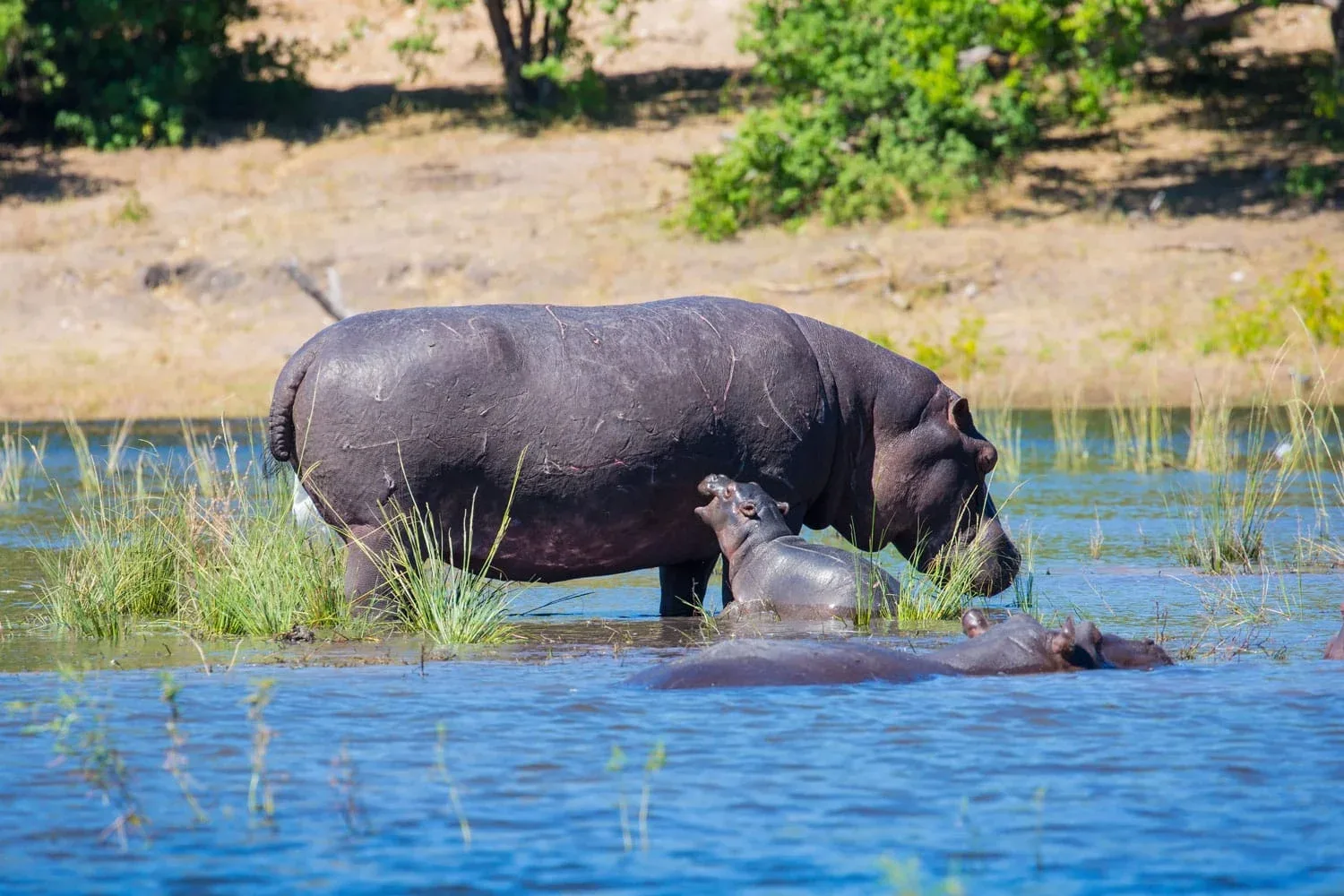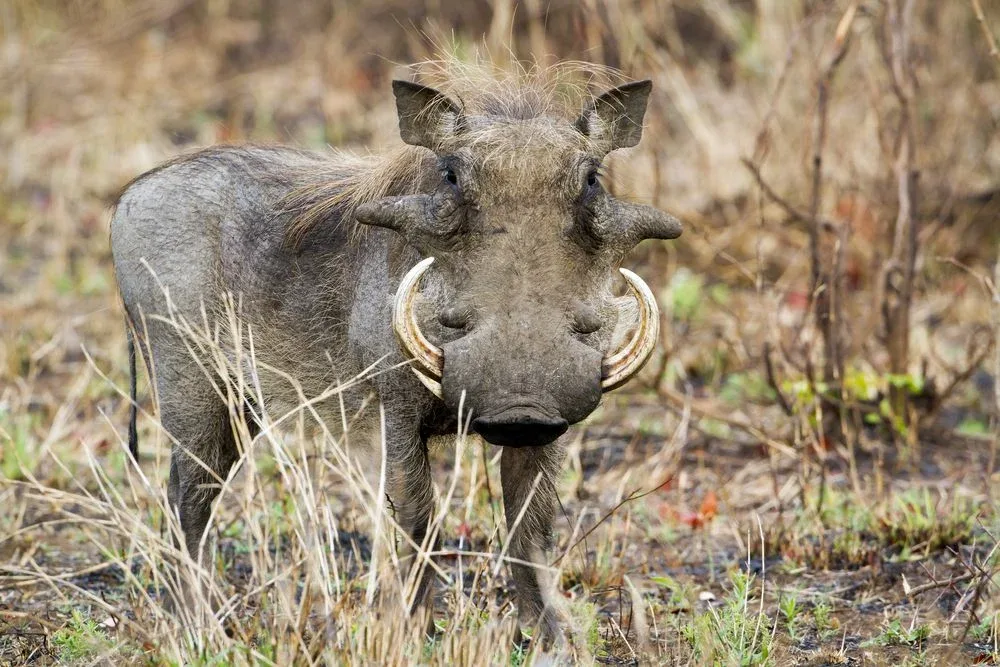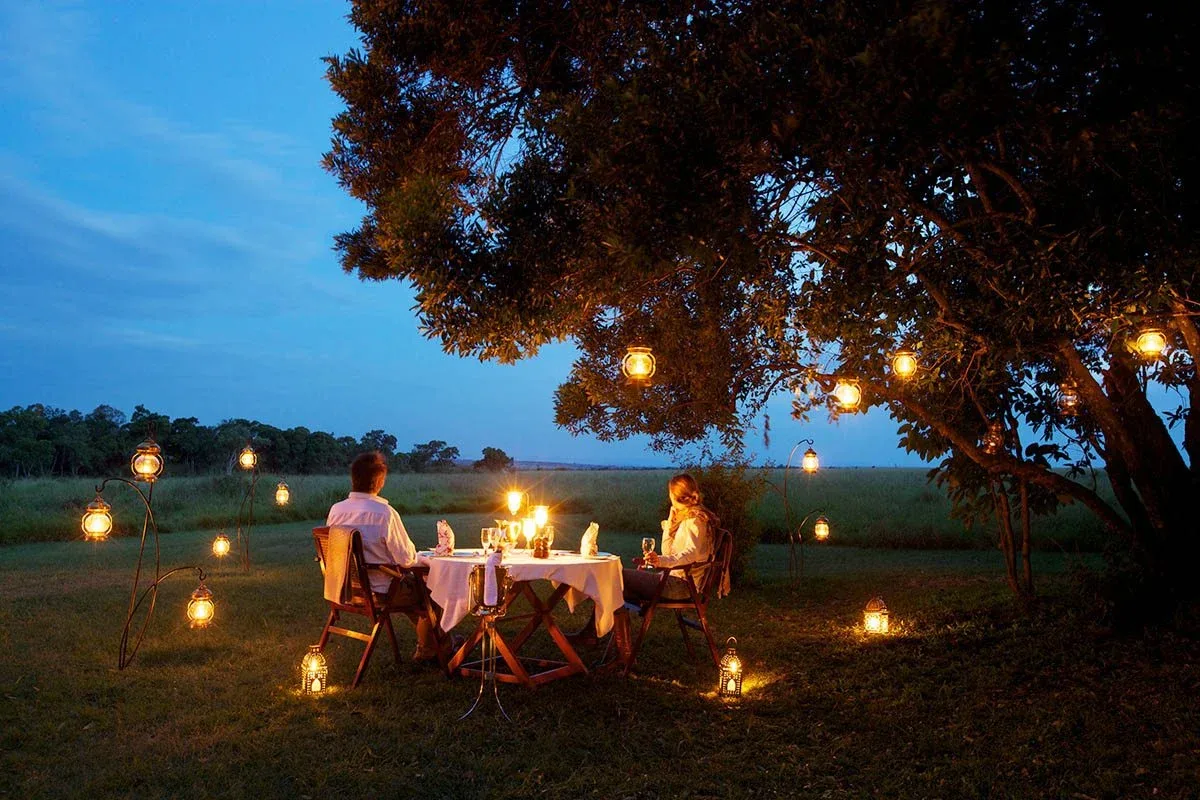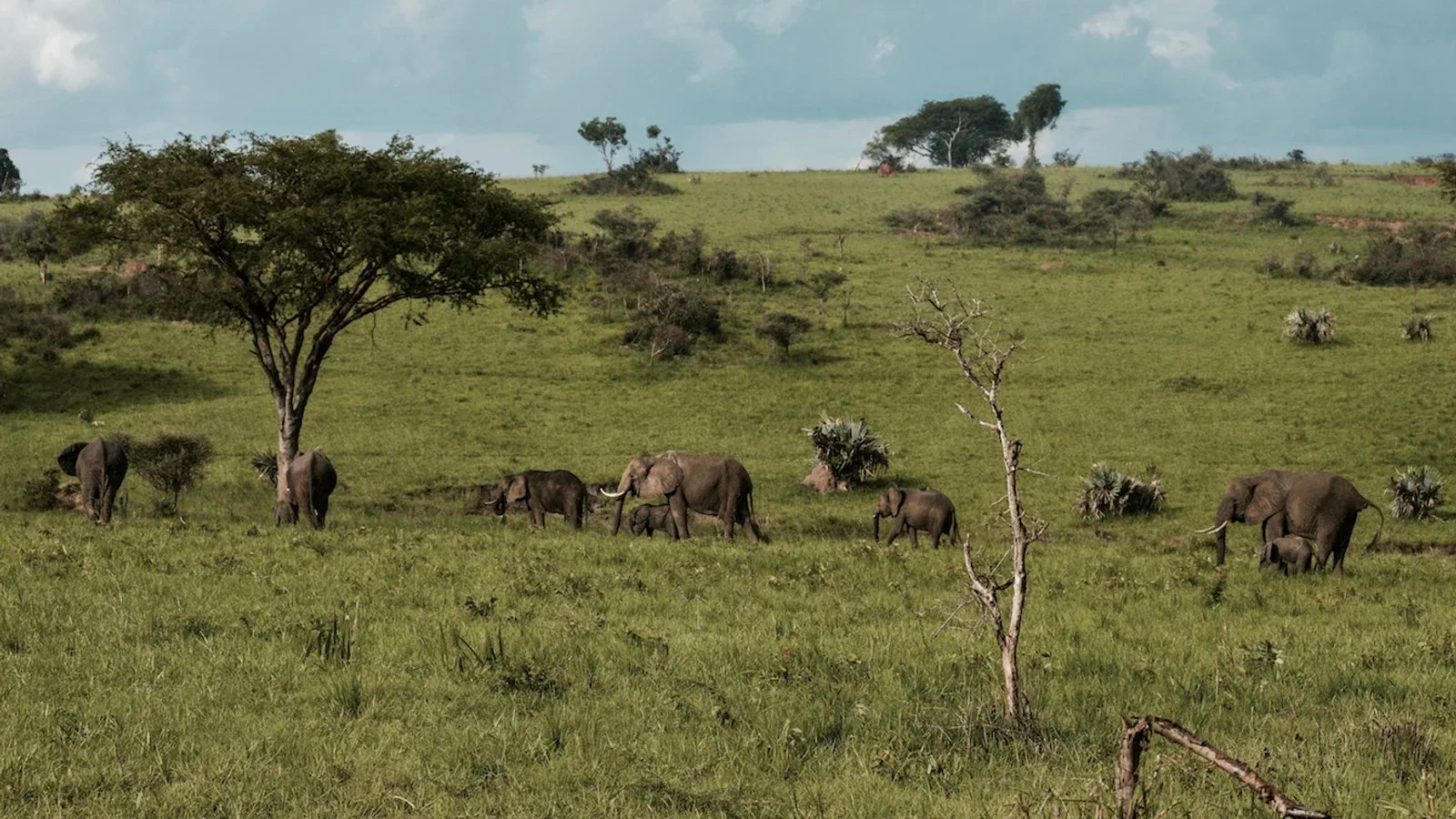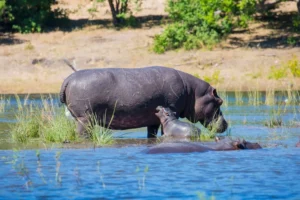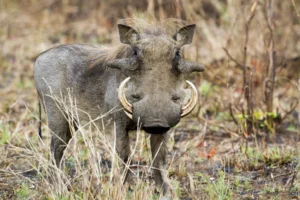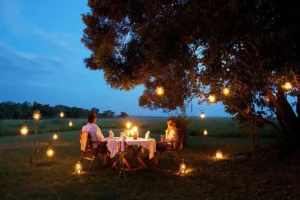Explore the best African safari parks and destinations, including Serengeti, Maasai Mara, Kruger National Park, and more. Discover iconic wildlife, stunning landscapes, and unforgettable safari experiences across Africa’s diverse ecosystems.
Africa is known for its diverse wildlife, beautiful landscapes, and fantastic safari experiences. The continent is home to many different national parks and game reserves that are home to many animals. Here are the top 10 African safari parks and destinations you should visit in 2022:
Kruger National Park
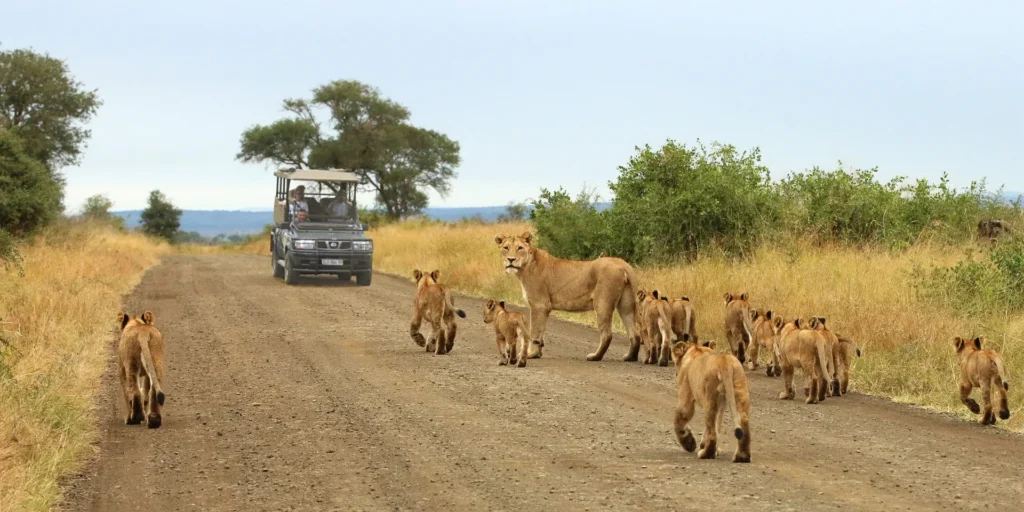
Kruger National Park, South Africa’s largest game reserve, spans more than 7,500 square kilometers and is renowned for its extraordinary biodiversity and stunning landscapes. This iconic park encompasses a diverse range of habitats, from expansive grasslands to dense forests and arid deserts, each supporting a rich array of wildlife species.
Home to over 1,500 animal species, Kruger National Park offers unparalleled opportunities for wildlife enthusiasts to observe Africa’s iconic Big Five—lions, leopards, elephants, buffaloes, and rhinos—in their natural habitats. The park is also a haven for other predators such as wild dogs and cheetahs, as well as a vast variety of bird species and smaller mammals.
Kruger National Park is divided into nine sections, each with its own distinct characteristics and ecosystems. Mopani, Letaba, Shingwedzi, Lower Sabie, and Skukuza are among the sections that offer diverse wildlife viewing experiences, ranging from the remote northern regions to the southern plains teeming with wildlife.
Visitors to Kruger National Park can embark on guided game drives, bush walks, and self-drive safaris to explore its expansive wilderness and encounter its abundant wildlife. The park’s infrastructure includes comfortable accommodations, rest camps, and lodges strategically located throughout, providing visitors with opportunities to relax and immerse themselves in the sights and sounds of the African bush.
Whether capturing breathtaking sunsets over the savannah, tracking elusive leopards through dense thickets, or witnessing herds of elephants gathering at watering holes, Kruger National Park promises an unforgettable safari adventure and an unparalleled glimpse into the natural beauty and wildlife diversity of South Africa.
Serengeti National Park
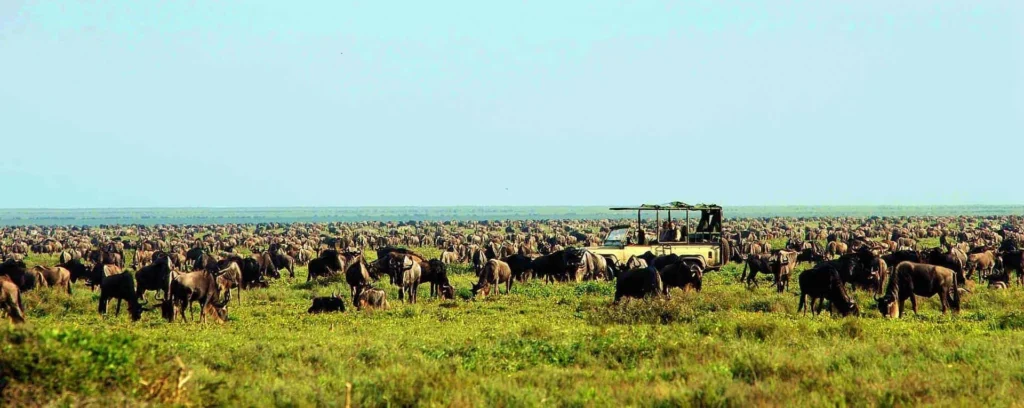
Located in Northern Tanzania, Serengeti National Park stands as an iconic symbol of Africa’s wildlife and natural beauty. Established initially as a hunting reserve by the German colonial government in 1914, it later transitioned into a national park after Tanzania gained independence. In 1954, Serengeti was recognized as a UNESCO World Heritage Site, acknowledging its significance in preserving some of the world’s last remaining herds of wildebeest and zebra.
Today, Serengeti National Park spans over 14,750 square kilometers and offers unparalleled wildlife viewing opportunities. It is renowned for its thriving populations of lions, cheetahs, rhinos, and elephants, among numerous other species. The park’s diverse ecosystems, including vast savannahs, acacia woodlands, and riverine forests, support a rich array of wildlife adapted to these varied habitats.
One of Serengeti’s most spectacular natural events is the annual Great Migration, where millions of wildebeest, zebras, and other herbivores move in search of fresh grazing lands. This phenomenon attracts visitors from around the world who come to witness this awe-inspiring spectacle of nature.
Visitors to Serengeti National Park can explore its wonders through guided safaris, hot air balloon rides, and cultural experiences with local Maasai communities. Whether capturing stunning wildlife photographs, observing predator-prey interactions, or simply soaking in the vast African landscapes, Serengeti promises an unforgettable safari experience that epitomizes the essence of Africa’s wild beauty and conservation success.
Masai Mara Game Reserve
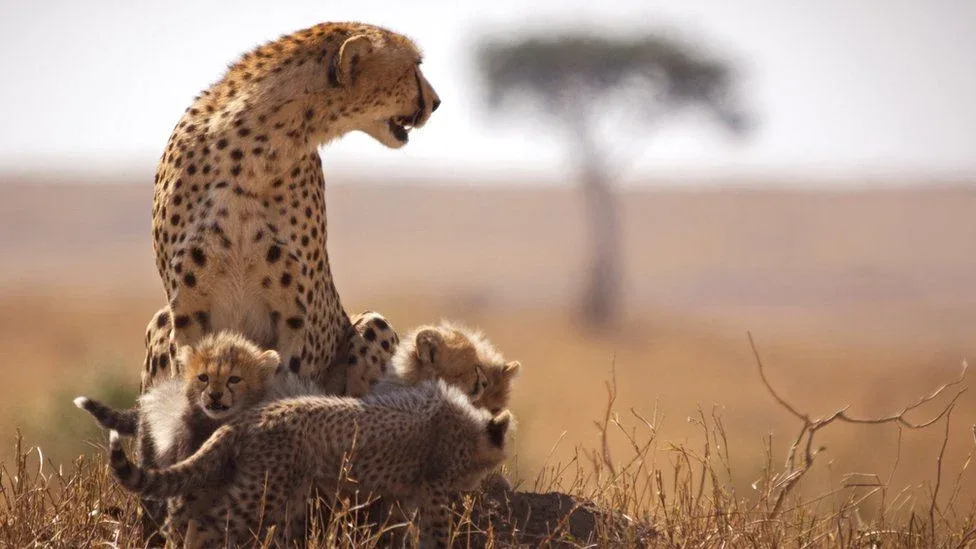
Named after the Maasai people who inhabit the area, Masai Mara is a game reserve in Kenya that forms part of the Great Rift Valley. It is one of Africa’s most famous safari destinations, with many animals and birds. The national park was established in 1961 to protect wildlife and is located on both sides of Narok-Nairobi. A common misconception about Masai Mara National Park is that it only protects Maasai Mara but extends beyond Narok County.
The park covers an area of 1150 square kilometers (440 square miles), with a buffer zone covering an additional 1250 square kilometers (480 square miles). It takes approximately 3 hours to drive through this territory from Nairobi or just over one hour if you fly directly into Oloolaimutia airstrip, which connects to other areas within Masai Mara via dirt roads or during the dry season when water levels drop significantly enough for vehicles to cross safely at least two times per week. This allows access between Meru National Park via North Bank, South Bank, or Serengeti plains, where many tourists come from outside Kenya/East Africa – such as Europe/Asia/USA, etc.
Chobe National Park
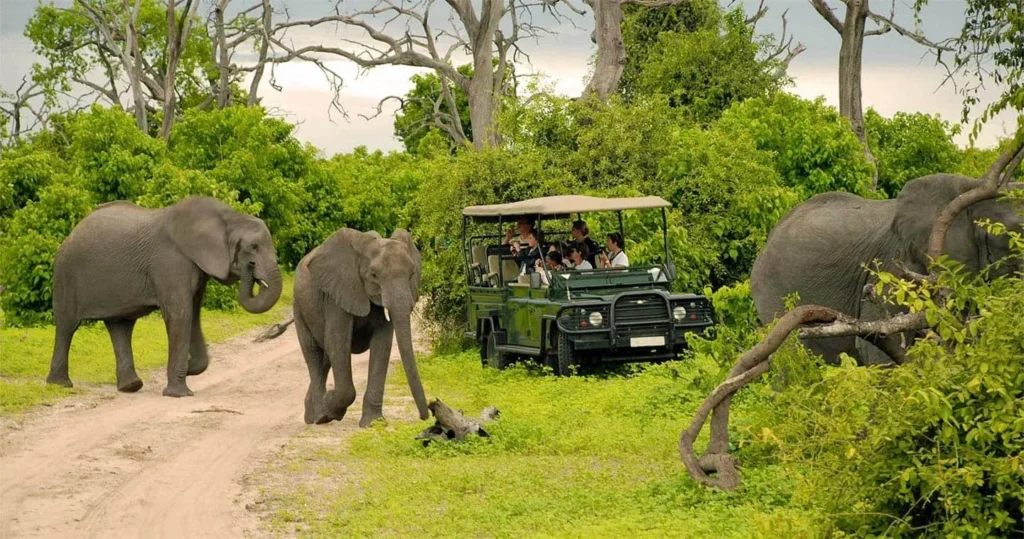
Chobe National Park, situated in northern Botswana near the borders with Namibia and Zambia, is celebrated as one of the largest and most biodiverse national parks in the country, spanning an impressive 25,000 square kilometers (9,700 sq mi). This vast wilderness is renowned for its abundance of wildlife, including a thriving population of elephants known to be one of the largest in Africa. Other notable species that call Chobe home include lions, leopards, buffalo, giraffes, and a myriad of bird species.
The park’s diverse ecosystems encompass floodplains, savannahs, and woodlands, providing habitats that support an array of flora and fauna unique to the region. Visitors flock to Chobe National Park year-round to experience thrilling safaris, boat cruises along the Chobe River, and mesmerizing wildlife encounters.
Accommodations within the park, such as Chobe River Lodge and Katima Mulilo Camp, offer guests the opportunity to stay close to some of the park’s most iconic sights and wildlife hotspots. Whether embarking on a guided game drive to witness elephant herds congregating along the riverbanks or enjoying a serene sunset cruise amidst a chorus of birdcalls, Chobe National Park promises an unforgettable safari experience in the heart of southern Africa’s wilderness.
Okavango Delta
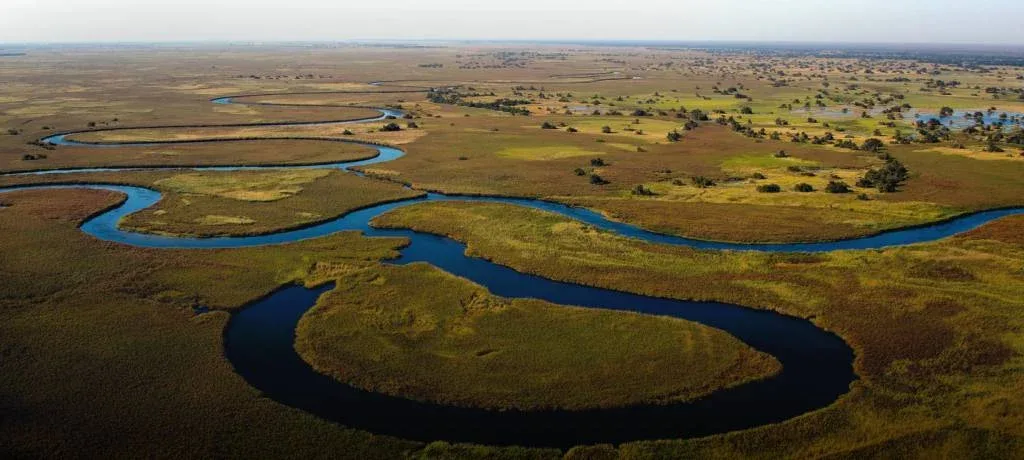
The Okavango Delta, situated in the southwest of Botswana, is a vast and mesmerizing wetland renowned for its unique ecology and biodiversity. This UNESCO World Heritage Site is a haven for birdwatchers, boasting over 500 bird species that thrive in its lush and diverse habitats. From majestic fish eagles to colorful kingfishers and elusive wattled cranes, the delta offers unparalleled opportunities for bird enthusiasts to observe and photograph a myriad of avian species.
In addition to its rich birdlife, the Okavango Delta supports a wide variety of wildlife, including iconic species such as elephants, lions, leopards, and buffalo. The delta’s seasonal flooding creates a mosaic of habitats ranging from floodplains and channels to islands and mopane woodlands, providing essential resources for both resident and migratory wildlife throughout the year.
Exploring the Okavango Delta is a truly immersive experience, offering activities such as mokoro (traditional dugout canoe) excursions, guided bush walks, and thrilling game drives. Visitors can witness elephants bathing in the delta’s waters, hear the roar of lions echoing across the plains, and marvel at the vibrant colors of African sunsets reflecting off the tranquil waters.
Whether embarking on a romantic getaway, a family adventure, or a solo journey into the heart of Africa’s wilderness, the Okavango Delta promises an unforgettable safari experience that celebrates the natural wonders and ecological significance of this remarkable landscape.
Selous Game Reserve
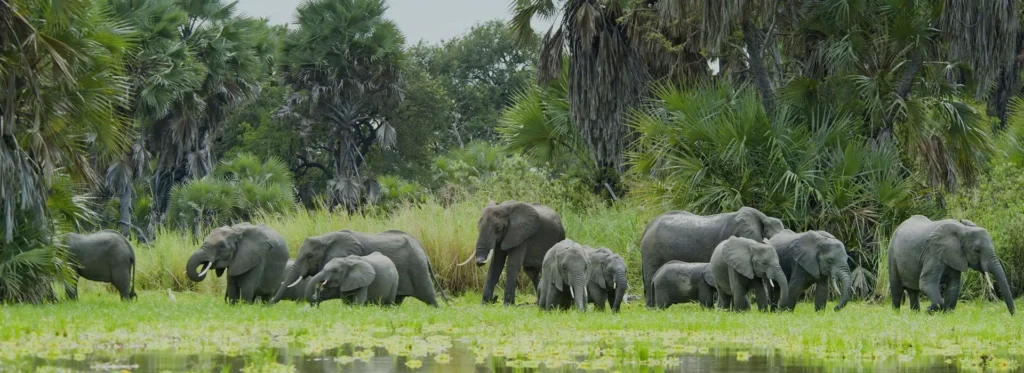
Selous Game Reserve, Tanzania’s largest national park, honors the legacy of Frederick Selous, a renowned British army officer and explorer instrumental in its establishment. Spanning an impressive area, the reserve boasts Africa’s largest concentration of elephants and buffalo, making it a prime destination for wildlife enthusiasts.
In addition to its iconic large mammals, Selous is a haven for birdwatchers, with over 300 species of birds, including eight species of storks, thriving in its diverse habitats. The Rufiji River, which winds through the reserve, sustains a rich ecosystem where hippos and crocodiles thrive alongside a variety of gazelles, baboons, leopards, and lions among many other species.
Visitors to Selous Game Reserve can explore its vast landscapes through guided safaris, boat cruises, and walking safaris, offering intimate encounters with its abundant wildlife and stunning natural scenery. The reserve’s remote location and expansive wilderness provide a unique opportunity to experience the untamed beauty of Africa in relative solitude, away from the crowds.
Whether observing wildlife along the riverbanks, tracking predators on land, or simply soaking in the sounds and sights of the African bush, Selous Game Reserve promises an unforgettable safari adventure filled with thrilling wildlife encounters and unparalleled natural splendor
Ngorongoro Crater

Ngorongoro Crater, a geological marvel located in Tanzania, stands as one of the world’s largest intact volcanic calderas and a UNESCO World Heritage Site. Formed around 600,000 years ago from a massive volcanic eruption, this caldera spans an impressive 907 square kilometers with an average depth of 700 meters. Its unique topography and fertile soils have nurtured diverse ecosystems, making it a hotspot for wildlife enthusiasts and researchers alike.
The crater’s enclosed environment provides a sanctuary for an incredible array of wildlife, including iconic species such as zebra, wildebeest, elephants, and a thriving population of predators like lions and hyenas. The saline Lake Magadi, nestled within the crater, attracts numerous bird species, with over 200 recorded species frequenting its shores to feed and nest.
Beyond its natural splendor, Ngorongoro Crater is also steeped in human history, with evidence of human habitation dating back at least 90,000 years. The Maasai people, known for their rich cultural heritage and traditional pastoralist lifestyle, continue to coexist with the wildlife within the conservation area.
Visitors to Ngorongoro Crater can enjoy guided safari tours that traverse the crater floor, offering unparalleled opportunities for wildlife viewing and photography against the backdrop of its dramatic landscapes. Conservation efforts in the area strive to balance tourism with the preservation of its ecological integrity, ensuring future generations can continue to marvel at the wonders of this ancient and biodiverse crater ecosystem.
Etosha National Park
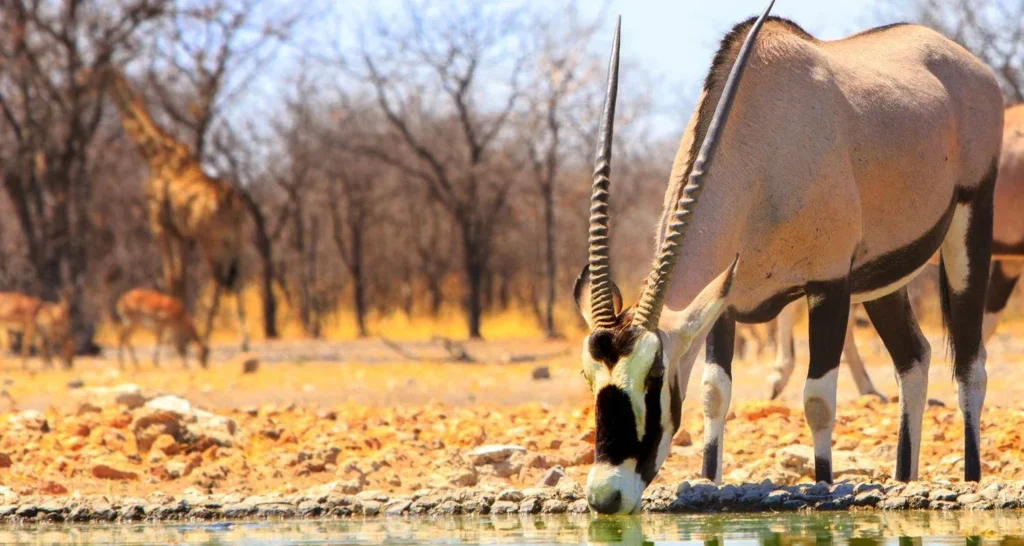
Etosha National Park is located in northern Namibia and is known for its wildlife, particularly elephants. The park was established in 1907 as a reserve to protect waterholes and wildlife by the German colonial government. It was later expanded by British colonizers and became one of the most popular safari destinations in Africa—for a good reason! With over 10,000 animals roaming around this massive park, visitors have ample opportunities to see some of their favorite species up close and personal.
Etosha National Park is home to some animals, including elephants, lions, rhinos, and zebras. The park has been designated as an Important Bird Area (IBA) by Birdlife International because it serves as a breeding ground for many bird species that migrate between Europe or Asia each year before returning during winter months when temperatures drop below freezing point on Earth.
Virunga National Park
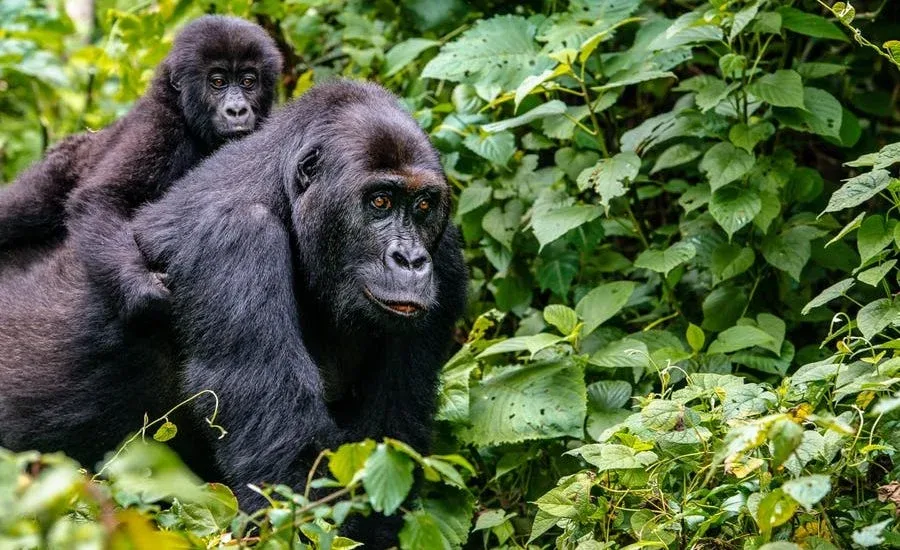
Virunga National Park is a World Heritage Site, home to gorillas, chimpanzees, okapi, and elephants. It’s also one of the most biodiverse places on Earth. The park was inscribed as a UNESCO World Heritage Site in 1979 due to its exceptional natural beauty, biodiversity, and cultural significance.
Located in the Democratic Republic of Congo (DRC) on the borders with Rwanda and Uganda, Virunga National Park covers 790 km² (310 mi²). To give you an idea of how big that is: New York City has an area of 302 km²!
Virunga National Park is home to about half of the world’s remaining mountain gorillas, which reside mainly in Volcanoes National Park – Africa’s oldest national park, established by King Albert I on 1st January 1925.
Lake Manyara National Park
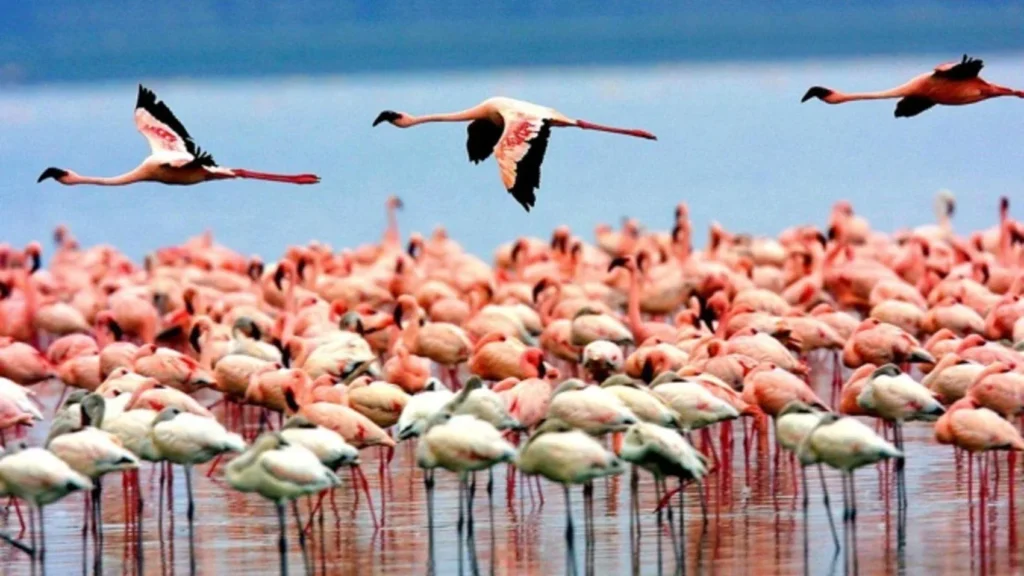
Lake Manyara National Park is located in the north of Tanzania and is one of the best places to see flamingos. The park also has a lot of baboons, who often come down to the shoreline to drink from the lake. Lake Manyara has an abundance of wildlife, including elephants, giraffes, and zebras. There are also many hippos in the lake itself that you can spot from one of its many observation decks along its banks.
Africa offers a fantastic safari experience for people of all ages and backgrounds who will leave the continent with beautiful memories. Regardless of age or background, a trip to Africa is one of the most exciting adventures you’ll ever take.
Conclusion
In conclusion, Africa’s best safari parks and destinations offer a spectacular tapestry of wildlife, landscapes, and cultural experiences. From the iconic Serengeti and Maasai Mara to the lush Okavango Delta and diverse Chobe National Park, each destination provides unparalleled opportunities for unforgettable safari adventures. Whether witnessing the Great Migration, encountering Africa’s Big Five, or exploring remote wilderness areas, these parks showcase the continent’s rich biodiversity and natural wonders, ensuring every visitor a journey filled with awe, adventure, and lasting memories of Africa’s wild beauty.

